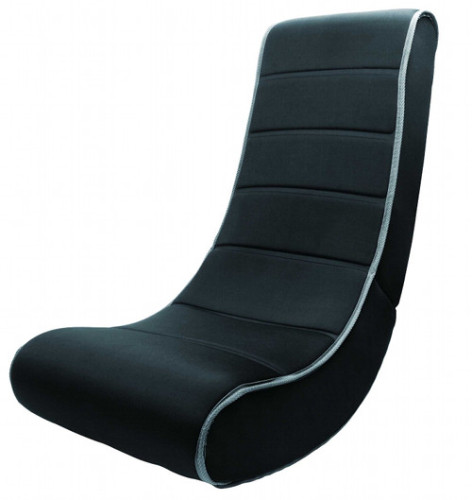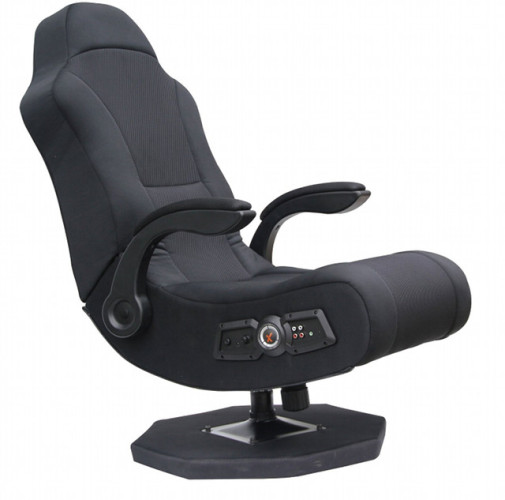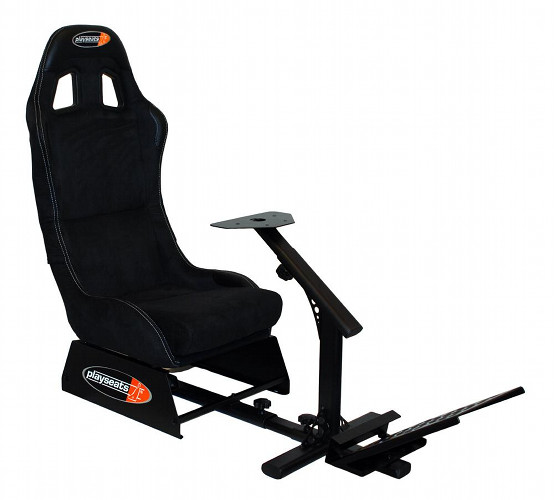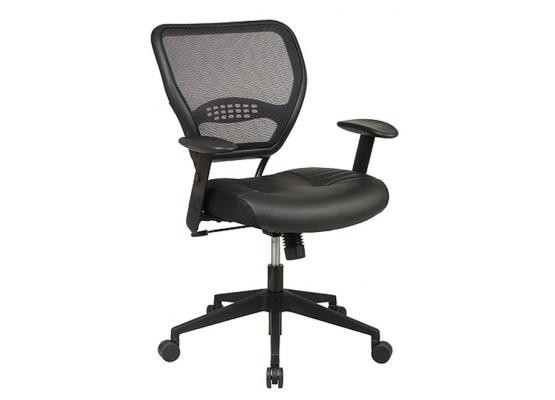

Let’s face facts; gaming is a sedentary activity. Even the most exciting virtual experience ultimately takes place in a chair or on a couch. This presents problems of its own because, as office ergonomics experts will constantly tell you, humans aren’t built to sit for hours at a time. One possible solution is a gaming chair. Besides offering an allegedly improved seating position, these chairs often bundle cupholders, speakers and other features designed to enhance your enjoyment. But do they really work, are they just a waste of money?
The types of chairs available vary depending on the price. The most basic chairs, which usually sell for between $50 and $75, are long, curved single-piece designs that sit right on the floor. Some models bundle a 2.1 sound system of questionable quality.

Cheap chairs like this are better than sitting on the floor, but they sell based on price more than quality. They don’t work at all for PC gaming, of course, and are also a terrible choice if you’ve wall-mounted your TV more than three feet off the floor. The difference in height between your seating position and your television will cause neck strain. Bargain chairs can be an okay choice if you’re broke, or if you have living room furniture that is normally positioned too far away from your television for comfortable gaming and you need a portable solution, but otherwise you shouldn’t waste your hard-earned dough.
If you step up from the budget models and spend over $100, but not more than $200, you’ll be able to grab a mid-range chair like an X-Rocker Pro or Commander Gaming Chair. Most of these models sit up from the floor like an office chair, though they are still much lower on average. This is a big ergonomic improvement because it means you won’t be looking up at your television, a situation that can cause neck strain after an hour or so. However, the position is still too low for use with a desktop gaming PC.  These chairs almost always have arm rests, which can reduce shoulder and arm pain for some people, and usually offer decent audio quality. There will usually be a sizable subwoofer in the chair, which can hit you in the chest with bass when you fire a gun or blow up an enemy tank. This creates a more engaging experience that only the best home theaters can beat. Better padding, faux-leather and armrests further improve long-term comfort. An X-Rocker Pro is twice the price of the company’s inexpensive floor-mounted rocker chairs, but I’d argue it’s far more than twice as good. This kind of chair is the best choice for most gamers.
These chairs almost always have arm rests, which can reduce shoulder and arm pain for some people, and usually offer decent audio quality. There will usually be a sizable subwoofer in the chair, which can hit you in the chest with bass when you fire a gun or blow up an enemy tank. This creates a more engaging experience that only the best home theaters can beat. Better padding, faux-leather and armrests further improve long-term comfort. An X-Rocker Pro is twice the price of the company’s inexpensive floor-mounted rocker chairs, but I’d argue it’s far more than twice as good. This kind of chair is the best choice for most gamers.
Spending more than $200 is going to put you into a world of options that are more specialized than less expensive models. Playseat, for example, will sell you a wide variety of chairs designed to create an immersive experience in racing games. Or you can buy a Hotseat, a “surround sound simulation chassis” designed for use with flight simulators. Specialized chairs are very expensive, and they don’t work outside of their niche, but they work very well with the games their built to enhance.

There are also a few high-end general-purpose chairs, like the Repose E1000 Gaming Chair, which retails for $449. Models like this tend to receive great reviews for long-term comfort, but they’re also bulky and difficult to move. Virtually all chairs that sell above $200 will only make sense for people who have a dedicated gaming cave. They’re good, but they only work for people with living space to spare.
The real rival to the gaming chair is the office chair. Though arguably less comfortable, an office chair often provides better lumbar support and may provide superior neck support. Better models also include adjustable armrests and adjustable lumbar. An office chair can be used in an office as well as the living room, which means you end up killing two birds with one stone. Personally, I use an office chair for both tasks. My experience has not convinced me that a game-specific chair is worth buying when I already have a comfortable office chair in my home. If you read reviews of gaming chairs online you’ll find many negative ones, and that’s not without reason. Many gaming chairs are poorly built and don’t hold up as well as their more mundane competition.

But that doesn’t mean my solution will work for you. If your office is not on the same floor as your home theater, using one chair for both your office and gaming is out of the question. The same is true if a family member might want to use the office while you game, or if your chair is too wide to move through a doorway without dis-assembly. If you do decide to go with a gaming chair I highly recommend buying a mid-range version with a stand rather than a chair that sits on the floor. Sitting low looks cool, but is also a great way to end up with a literal pain in your neck.




 Im Vegan And Im Not Sure How I Feel About Far Cry 3
Im Vegan And Im Not Sure How I Feel About Far Cry 3 GTA V PC Cheat Codes For Invincibility, Max Health and Armor, Wanted Level, Spawn Vehicles, World & More: Updated
GTA V PC Cheat Codes For Invincibility, Max Health and Armor, Wanted Level, Spawn Vehicles, World & More: Updated Bloodborne Boss Guide: How to Easily Beat Micolash, Host of the Nightmare
Bloodborne Boss Guide: How to Easily Beat Micolash, Host of the Nightmare Obtaining the Assassin’s Shenti in Sword Art Online Re; Hollow Fragment
Obtaining the Assassin’s Shenti in Sword Art Online Re; Hollow Fragment Go Ask Gary: Harry Potter - Basilisk Walkthrough
Go Ask Gary: Harry Potter - Basilisk Walkthrough